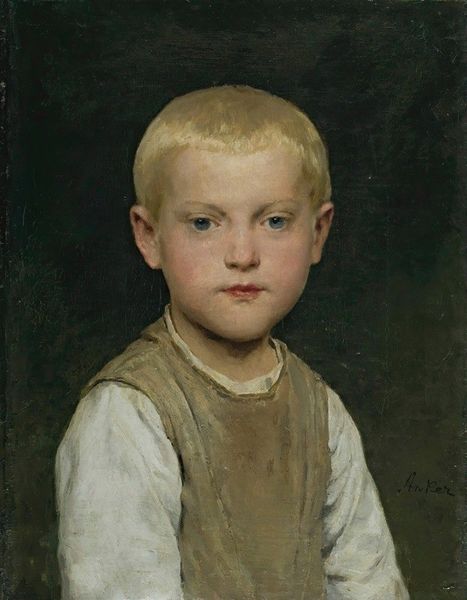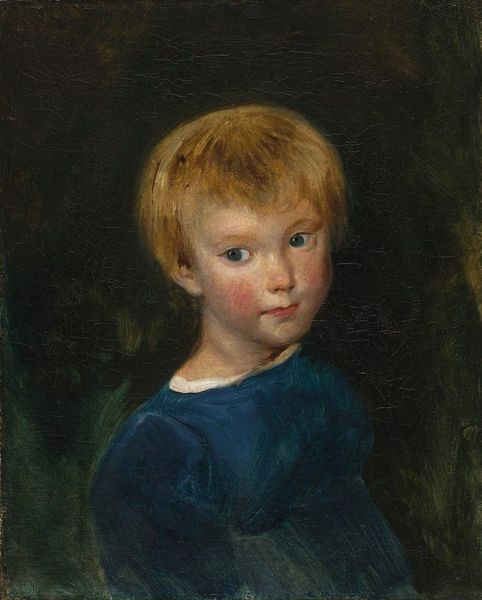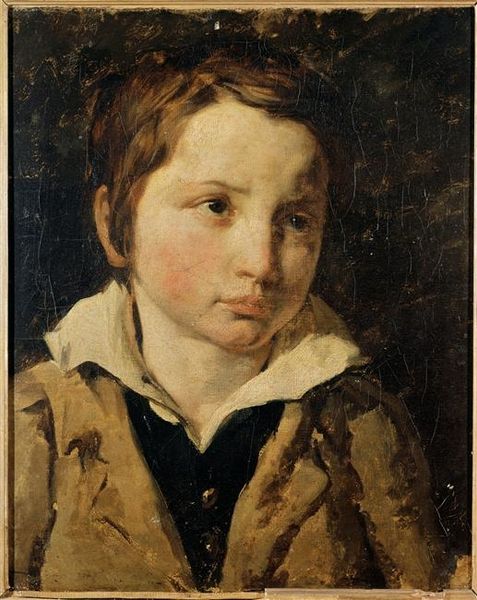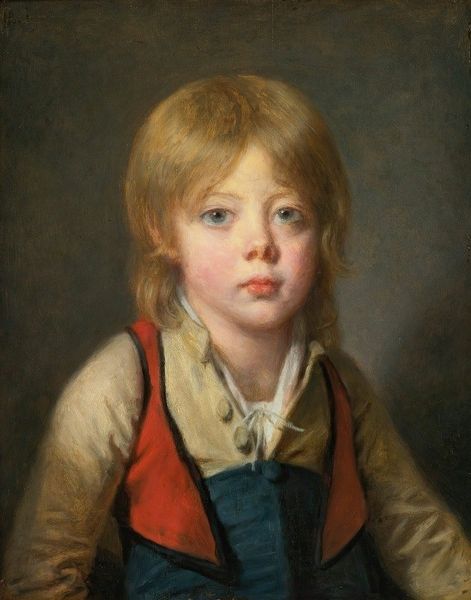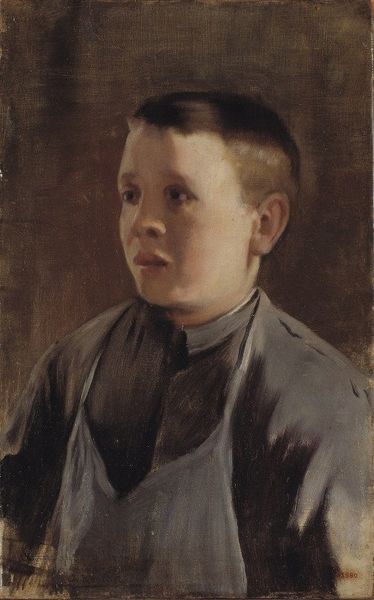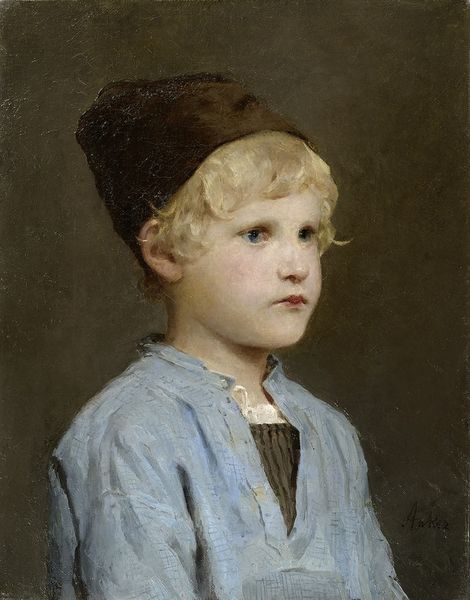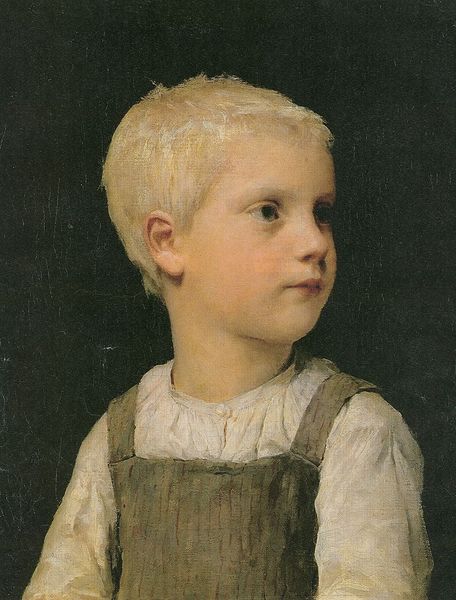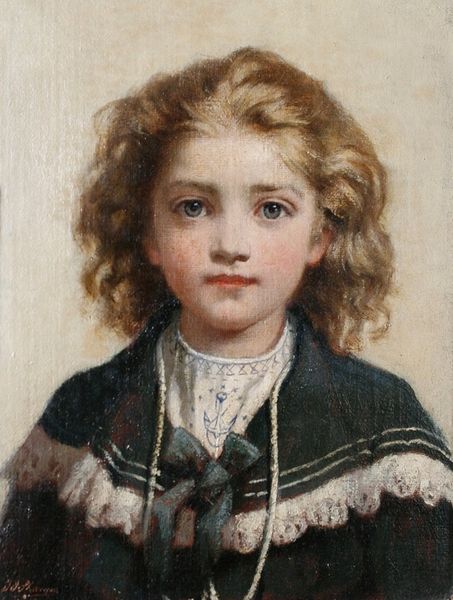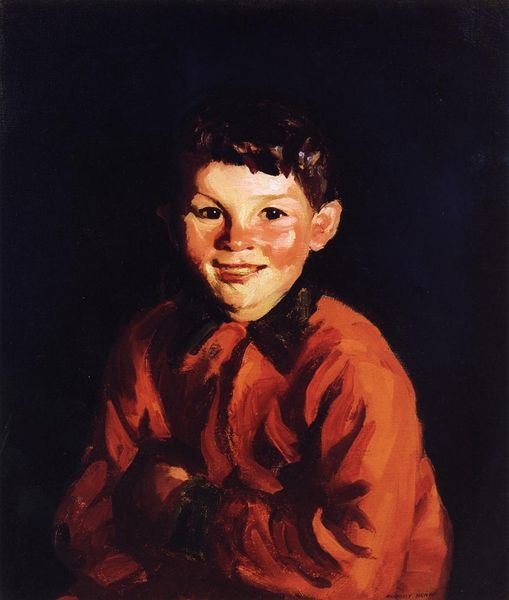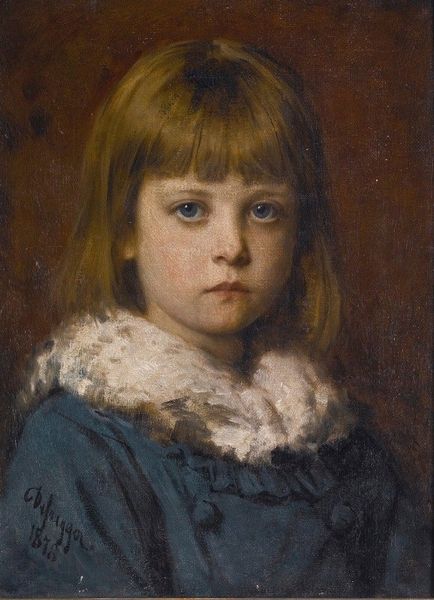
painting, oil-paint, oil
#
portrait
#
portrait
#
painting
#
oil-paint
#
oil
#
figuration
#
romanticism
#
genre-painting
Dimensions: 48.0 x 34.0 cm
Copyright: Public Domain
Curator: This is Franz von Lenbach’s "Portrait of Ludwig von Hagn, Son of the Painter Ludwig von Hagn", held here at the Städel Museum. It's an oil painting that offers a glimpse into 19th-century German society. Editor: Immediately, I'm struck by the boy's somber expression. It's unusual for a child's portrait; he appears almost burdened, thoughtful in a way that seems beyond his years. Curator: The portrait embodies elements of Romanticism, particularly its focus on emotion and the individual. Considering that his father was also a painter, and quite well-known, this portrayal suggests commentary on the expectations placed upon young Ludwig. Editor: Exactly. And there’s the restrictive attire – the dark sailor suit with the tightly tied scarf. What message does that uniform convey, both about class and the shaping of young boys into prescribed roles? Curator: It points to a society grappling with industrialization and societal expectations, highlighting the importance of lineage and predetermined social status within the family. We must examine the lack of dates around the artwork to understand context during Lenbach's career. The pressure on children from artistic families to continue the tradition must have been immense. Editor: And this is further emphasized through his posture and averted gaze. The painting subtly touches on gender roles. Did little Ludwig have a say in his future path? This isn't just a sweet portrait of a child; it's a window into a hierarchical society, and possibly a form of subtle critique. Curator: His eyes tell that whole story, don't they? Considering Lenbach’s role within the art establishment, it’s fascinating to see such delicate commentary on privilege and expectations embedded in this type of domestic scene. Editor: Indeed. Analyzing through this intersectional lens allows us to engage with questions of class, legacy, and power structures subtly manifested in what might otherwise appear as just another 19th-century portrait. Curator: It enriches our understanding beyond just aesthetics; it helps us contemplate art as a form of social documentation and critical inquiry. Editor: Absolutely, revealing complex realities about representation, childhood and the impact of social expectations through artistic lenses.
Comments
No comments
Be the first to comment and join the conversation on the ultimate creative platform.

